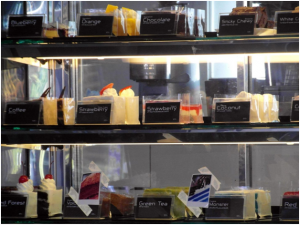Domestic fridge and freezer breakdowns are never convenient. Most of us have forgotten how to cater to our families without relying on them, but it isn’t the end of the world. For a commercial establishment, however, it means a substantial dent in the budget from wasted supplies and a logistical crisis for the whole enterprise.

If temperatures have risen just a fraction too high health and safety regulations forbid serving the food.
To make it worse, unlike other appliances, refrigerators aren’t easily fixed. Re-gassing them is a lengthy process and often doesn’t keep them going. Even tipping them over to investigate can disturb the refrigerant and require them to be off for hours before reconnecting.
Emergency plan
Glass-fronted shop-front refrigerators you may be able to do without, but your main solid door refrigeration is mission-critical. A service and insurance contract with a specialist company is definitely the best emergency preparation you can make. You may also look at getting some spare parts of metal bonding adhesive from companies such as https://www.ct1.com/product-applications/metal-to-metal-adhesive/ that you can use for low grade, cosmetic damage that may occur.

Prevention
If you own a grocery, brewery, restaurant, supermarket, bar, café or rest home you don’t want to deal with breakdowns, ever, so try never to have one. Small signs of problems like leaks or ice caused by imperfect door seals, or varying temperatures, can often be put right before damage is serious. Scheduling routine maintenance calls with a service company will catch such issues in good time.
Replacement
Budget to replace them by a specific date. This minimizes the risk of being caught out and keeps your insurance premiums low.
Relocation
If you move your refrigerator avoid tipping it. The refrigerant it contains is half in a liquid state and half gaseous. Disturbing it can cause bubbles or pooling in parts of the pipework and this resists its circulation. Powering it up before the gas/liquid levels have settled can exacerbate the problem by moving the blockages into the capillaries, so if you do have to tip it, make sure the power is off and do not reconnect for a couple of hours. You can find instructions on moving fridges here: http://www.diydoctor.org.uk/projects/moving-a-fridge-or-freezer.htm.
The location of your refrigerator is important. It is only built to operate in a specific temperature range so places that get too hot or too cold can actually break it. Ensure it is not jammed so close to a wall that vents or fans are obstructed.



